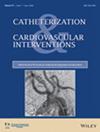Beaware of Intracardiac Potentials Induced by Intravascular Lithotripsy
Abstract
Background
Intravascular lithotripsy (IVL), that generates shockwaves through spark gap discharge between emitters, has been increasingly used to treat severely calcified coronary artery lesions. However, there is a question as to whether IVL has no electrical effects on endocardial tissues or cardiac implantable devices (CIEDs).
Aims
The aim of this study was to investigate the effects of IVL-induced intracardiac potentials on cardiac electrophysiology and CIEDs. Specifically, we examined how spark gap discharge of IVL influence myocardial electrical activity and the sensing function of CIEDs.
Methods and Results
We conducted a preliminary in vitro experiment using an IVL and a pacemaker placed in a saline-filled container, where we observed that the pacemaker did indeed detect the discharge of IVL, leading to pacing inhibition. Then, 13 patients undergoing PCI with IVL were investigated with real-time monitoring of in vivo intracardiac electrogram (EGM) synchronized with body surface ECG, with an external temporary pacing lead placed in the right ventricle. Similar to the above experiment, we found that IVL pulses were indeed detected on the EGM and sensed by the temporary pacemaker. Of the 287 IVL pulses outside the range of absolute refractory period, 59 (20.6%) captured the ventricle, while the remaining 228 (79.4%) did not elicit any electrical myocardial activity.
Conclusions
Our observations indicate concerns about the use of IVL: the risk of inducing fatal arrhythmia and the occurrence of cardiac arrest or bradycardia in the CIED-dependent patients. IVL users should be aware of the potential risk of such events.

 求助内容:
求助内容: 应助结果提醒方式:
应助结果提醒方式:


